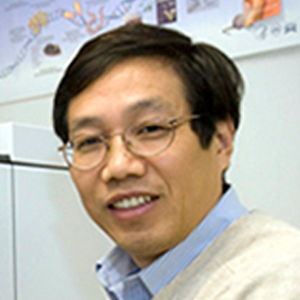Insights from recent plant studies
The neutral lipids referred to as triacylglycerols, or TAGs, are ubiquitous storage forms of reduced carbon and energy in eukaryotes and some bacteria. Seeds are recognized as the primary organs for TAG storage in plants. It is interesting, however, that another structure often found in mammalian cells, lipid droplets composed of neutral lipids, are present in most plant cell types, including those in vegetative tissues, such as leaves. Besides its role in fueling postgerminative growth of oilseed plants, recent studies have shown that triacylglycerol represents the source of fatty acids oxidized in peroxisomes, and this metabolism is a key aspect of lipid homeostasis important for plant growth and development.
 A simplified scheme showing the role of triacylglycerol metabolism in fatty acid β-oxidation and membrane lipid homeostasis in plantsThe importance of triacylglycerol metabolism in maintaining lipid homeostasis in plants is perhaps best illustrated by the trigalactosyldiacylglycerol 1 mutant, known as tgd1 (See Xu et al, 2005, Fan et al, 2013 and Fan et al, 2014). In this mutant, a defect in membrane lipid synthesis leads to increased accumulation of triacylglycerol and a marked increase in both the synthesis and turnover of fatty acids. Disruption of tgd1 does not affect overall vegetative and reproductive growth, but tgd1 plus inhibition of triacylglycerol biosynthesis via disruption of phospholipid:diacylglycerol acyltransferase 1 (also known as PDAT1) leads to severe growth retardation, gametophytic defects and necrotic lesions in growing leaves. This appears to be due to the accumulation of cytotoxic free fatty acids and possibly other lipid intermediates.
A simplified scheme showing the role of triacylglycerol metabolism in fatty acid β-oxidation and membrane lipid homeostasis in plantsThe importance of triacylglycerol metabolism in maintaining lipid homeostasis in plants is perhaps best illustrated by the trigalactosyldiacylglycerol 1 mutant, known as tgd1 (See Xu et al, 2005, Fan et al, 2013 and Fan et al, 2014). In this mutant, a defect in membrane lipid synthesis leads to increased accumulation of triacylglycerol and a marked increase in both the synthesis and turnover of fatty acids. Disruption of tgd1 does not affect overall vegetative and reproductive growth, but tgd1 plus inhibition of triacylglycerol biosynthesis via disruption of phospholipid:diacylglycerol acyltransferase 1 (also known as PDAT1) leads to severe growth retardation, gametophytic defects and necrotic lesions in growing leaves. This appears to be due to the accumulation of cytotoxic free fatty acids and possibly other lipid intermediates.
The deficiency in triacylglycerol synthesis also results in increased membrane phospholipid levels, which sequesters a fraction of the toxic fatty acids. Apparently, this response is insufficient to compensate fully for the buffering function conferred by triacylglycerol synthesis and turnover as evidenced by the necrosis described above.
Further evidence supporting the notion that triacylglycerol metabolism is important for maintaining lipid homeostasis in plants derives from studies in which sugar-dependent triacylglycerol lipase, known as SDP1, or peroxisomal transporter 1, known as PXA1, are disrupted.
In vegetative tissues of plants, fatty acids are synthesized almost exclusively in the double-membraned plant organelles called chloroplasts. During rapid cell growth, the vast majority of de novo-synthesized fatty acids are incorporated into membrane lipids, and despite high triacylglycerol synthesis rates, triacylglycerol does not accumulate to significant levels.
However, when either SDP1 or PXA1 are disrupted, leaf triacylglycerol levels increase by approximately 150-fold relative to wild-type plants (See Fan et al, 2014 and Kelly, et al 2013), confirming that triacylglycerol is turned over rapidly during vegetative growth.
Membrane phospholipid levels increase in either tgd1sdp1 or tgd1pxa1 double mutants as they did in the tgd1pdat1 double mutant described above. These data provide compelling support for a triacylglycerol metabolism role in membrane lipid homeostasis in plants.
Studies in yeast and mammals established lipins, a family of phosphatidic acid phosphatases, called PAH for short, as key players in triacylglycerol synthesis. Interestingly, Arabidopsis lipin homologs PAH1 and PAH2 are not required for triacylglycerol synthesis in developing seeds, the major lipid-storage organ of plants. However, disruption of lipin homologs in the tgd1 mutant causes a severe decrease in leaf triacylglycerol accumulation, suggesting a conserved role for lipins in triacylglycerol synthesis for yeast, mammals and plant vegetative tissues.
Recent biochemical and genetic analysis has uncovered an intricate interplay between triacylglycerol metabolism, fatty acid β-oxidation and membrane lipid homeostasis in plants. These studies highlight the similarities of the roles these metabolic events play in plants, yeast and mammalian cells. They also illuminate another potential model system for studying these relationships that may provide important insights for advances in agriculture, drug development and human health.
Enjoy reading ASBMB Today?
Become a member to receive the print edition four times a year and the digital edition monthly.
Learn moreGet the latest from ASBMB Today
Enter your email address, and we’ll send you a weekly email with recent articles, interviews and more.
Latest in Science
Science highlights or most popular articles

Cholesterol as a novel biomarker for Fragile X syndrome
Researchers in Quebec identified lower levels of a brain cholesterol metabolite, 24-hydroxycholesterol, in patients with fragile X syndrome, a finding that could provide a simple blood-based biomarker for understanding and managing the condition.

How lipid metabolism shapes sperm development
Researchers at Hokkaido University identify the enzyme behind a key lipid in sperm development. The findings reveal how seminolipids shape sperm formation and may inform future diagnostics and treatments for male infertility.

Mass spec method captures proteins in native membranes
Yale scientists developed a mass spec protocol that keeps proteins in their native environment, detects intact protein complexes and tracks drug binding, offering a clearer view of membrane biology.

Laser-assisted cryoEM method preserves protein structure
University of Wisconsin–Madison researchers devised a method that prevents protein compaction during cryoEM prep, restoring natural structure for mass spec studies. The approach could expand high-resolution imaging to more complex protein systems.

Method sharpens proteome-wide view of structural changes
Researchers developed a method that improves limited proteolysis coupled with mass spectrometry, separating true changes from abundance or splicing effects.

Discoveries made possible by DNA
The discovery of DNA’s double helix revealed how genetic information is stored, copied and expressed. Revisit that breakthrough and traces how it laid the foundation for modern molecular biology, genomics and biotechnology.


